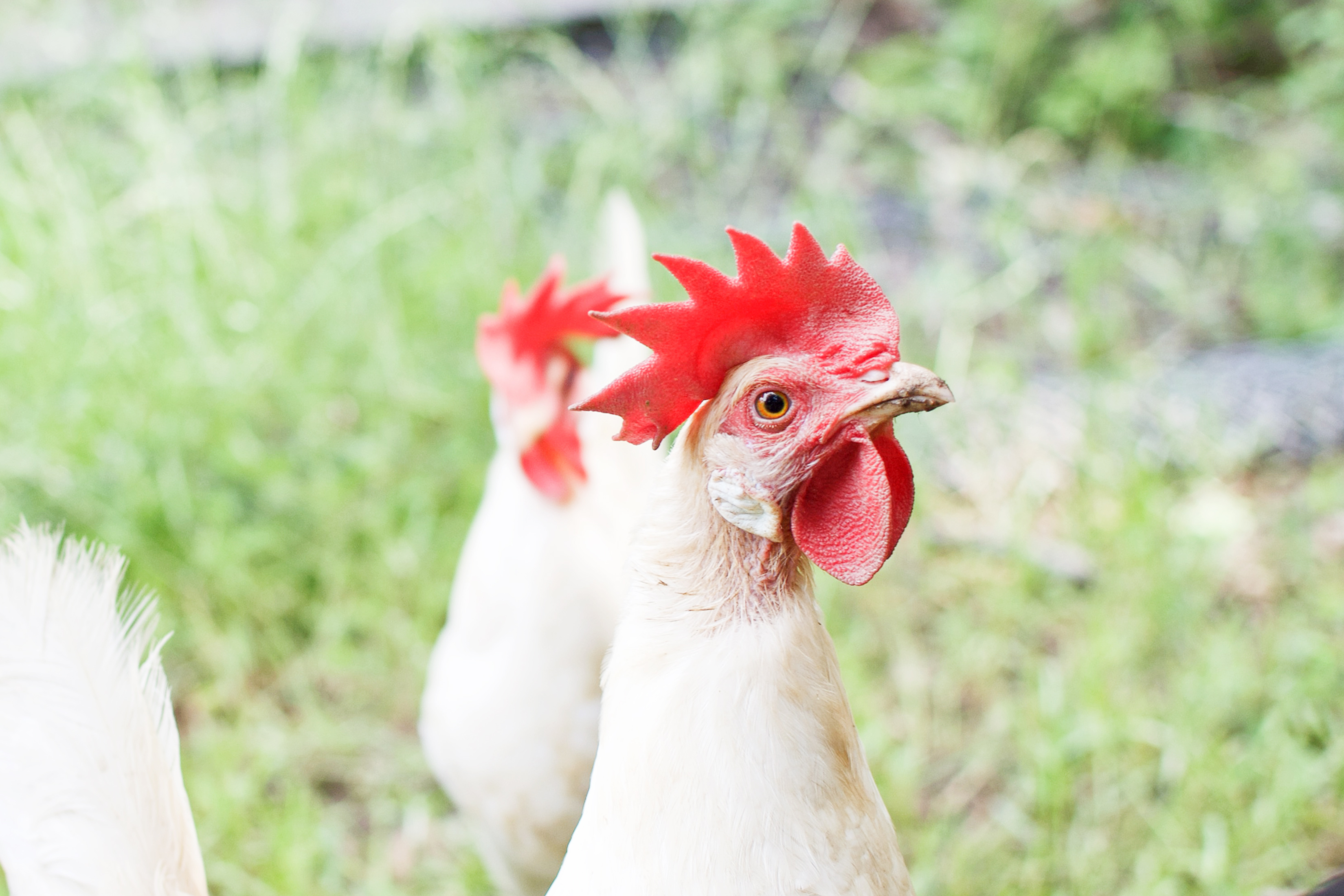Grocery list in hand, get-in-get-out / “just stick to what’s on the list” as the goal (never happens), wielding your metal chariot, you sweep the back of the store until you reach the chicken egg section. So many freaking options.
The basic store-brand selection is dirt cheap, but are they as nutritious? The free-range organic sound extra trendy, but they’re $8 bones. Maybe you’ll land on cage-free today, the $3 compromise between bottom of the line and top shelf – even though you have no idea what “cage-free” even means. Shall we crack this cackleberry code? I’m no eggspert, but a national nutrition certification may help birth some nuggets of wisdom.

Recap of Egg Nutrition 101, Part I: Healthy or Unhealthy?
In part I, we dove into the macronutrients of every chicken egg: protein, fats, carbs. We dug even deeper into an egg’s micronutrient content: vitamins, minerals, antioxidants. Even touched on a few studies looking at saturated fat and cholesterol’s connection to heart disease – are these actually directly related? Don’t miss the evidence-based article.
Table of awesome.
- Battery cages.
- Cage-free.
- Free-range.
- Organic.
- Free-range, organic.
- Which is best?
Battery cages.
The unnamed category for obvious marketing reasons. You can’t place a huge label on your carton of eggs titled “battery cage” and effectively sell these bad boys. Better to not mention their conditions unless they’re favorable and help to increase sales.
Conditions. According to the United Egg Producers (UEP), caged hens require the following (not all mentioned in this list):
- Poop in upper cages doesn’t drop on the hens in lower cages.
- Laying hens are able to stand comfortably. The cage-floor slope can’t exceed 8º.
- Allotted space is a minimum of 67 square inches, roughly equal to a half square foot. Maximum space of the recommended range is 86 sq in = just over a half square foot.
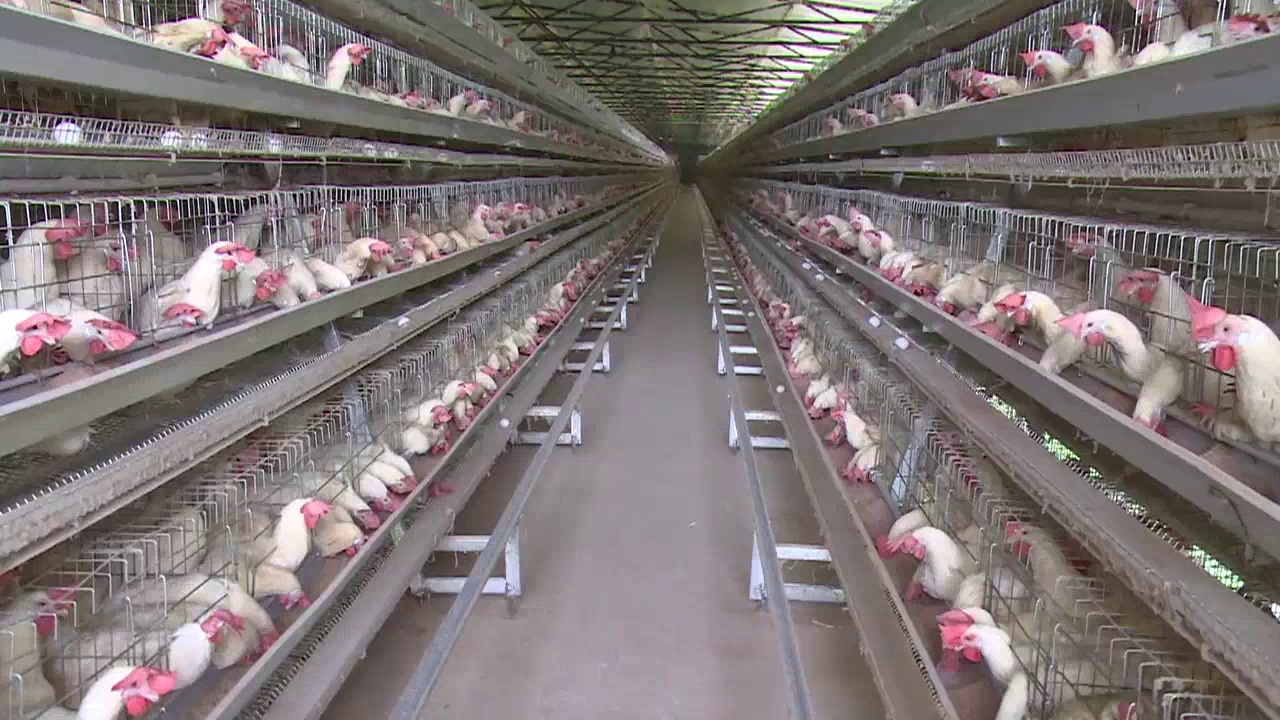
Feed: Standard laying hen feed is majority cheap grains / grain legumes, e.g. corn, wheat, soy with a multivitamin sprinkled in and a few probiotics. Here’s Purina’s Layena Premium Poultry Feed below:
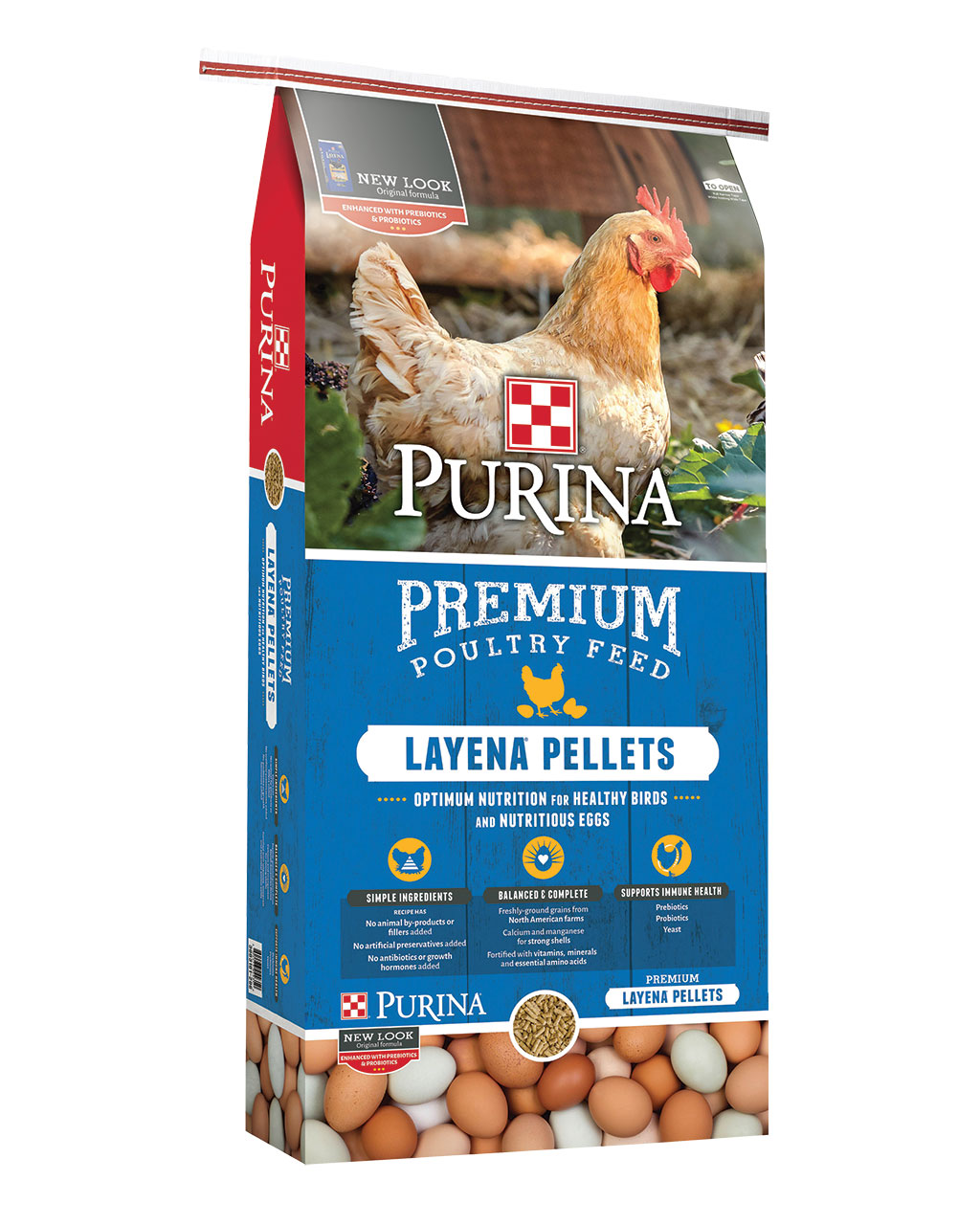
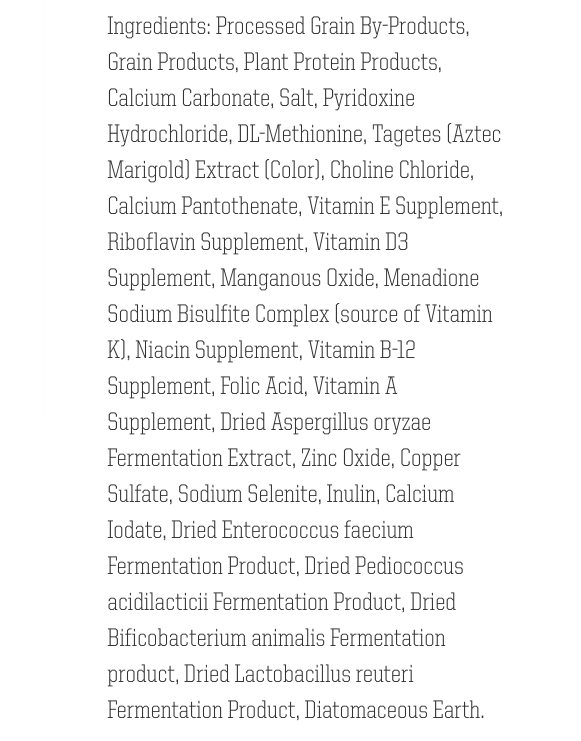
Mother Earth News suggests that chickens naturally eat the following: green plants, seeds found in the wild, earthworms, insects, and all sorts of grubs. When synthetically derived vitamins weren’t previously necessary to a hen’s diet, now they are because “grain by-products” won’t offer these chickens the nutrition they need to survive and thrive. Does a suboptimal diet yield suboptimal eggs? Great question. Keep an eye out for the nutrition teaser at the end of every section.
Activity level? Standing up and sitting down per the half square foot of cage space. No legal reason or regulation to offer them outdoor time. We might be the most sedentary nation in the world with the most sedentary egg-laying chickens in the world. Does exercise affect chicken-egg nutrition? Another great question to be asking. We’ll make some discoveries when we compare all the raising methods at the end.
Learning note: our nation’s OG chicken is called a jungle fowl, producing 12 eggs a year in breeding season only. Through genetic selection, a very strategic means of breeding to optimize chicken production, our modern day fowls produce close to 300 eggs a year.
Nutrition. Interested in seeing the exact nutritional value of a caged egg? Check out Part I. We take a deep dive into calories, macronutrients and micronutrients.
Cage-free.
The history. When did cage-free become a thing? In 2008, a California law was passed making it illegal to keep laying hens in battery cages across the entire state. By 2010, caged eggs couldn’t even be sold in CA. Perhaps animal activists and advocates catalyzed the market shift, along with a cage-free commitments from Whole Foods & Stanford University, and the European Union banning cages altogether. [Data from Open Philanthropy Project].
Conditions. The UEP Animal Husbandry Guidelines mandate 1 to 1.5 sq ft of floor space for every cage-free chicken to move around. The (3) types of cage-free systems include: (1) multi-tiered aviary, (2) partially-slatted system, (3) single-level. The latter requires 1.5 sq ft since the laying hen doesn’t have access to vertical space. No required access to the outdoors. Nesting space requires 9 sq ft for every 100 chickens. 6 inches of perch space per hen.
“Unlike battery hens, cage-free hens are able to walk, spread their wings and lay their eggs in nests, vital natural behaviors denied to hens confined in cages.” – The Humane Society
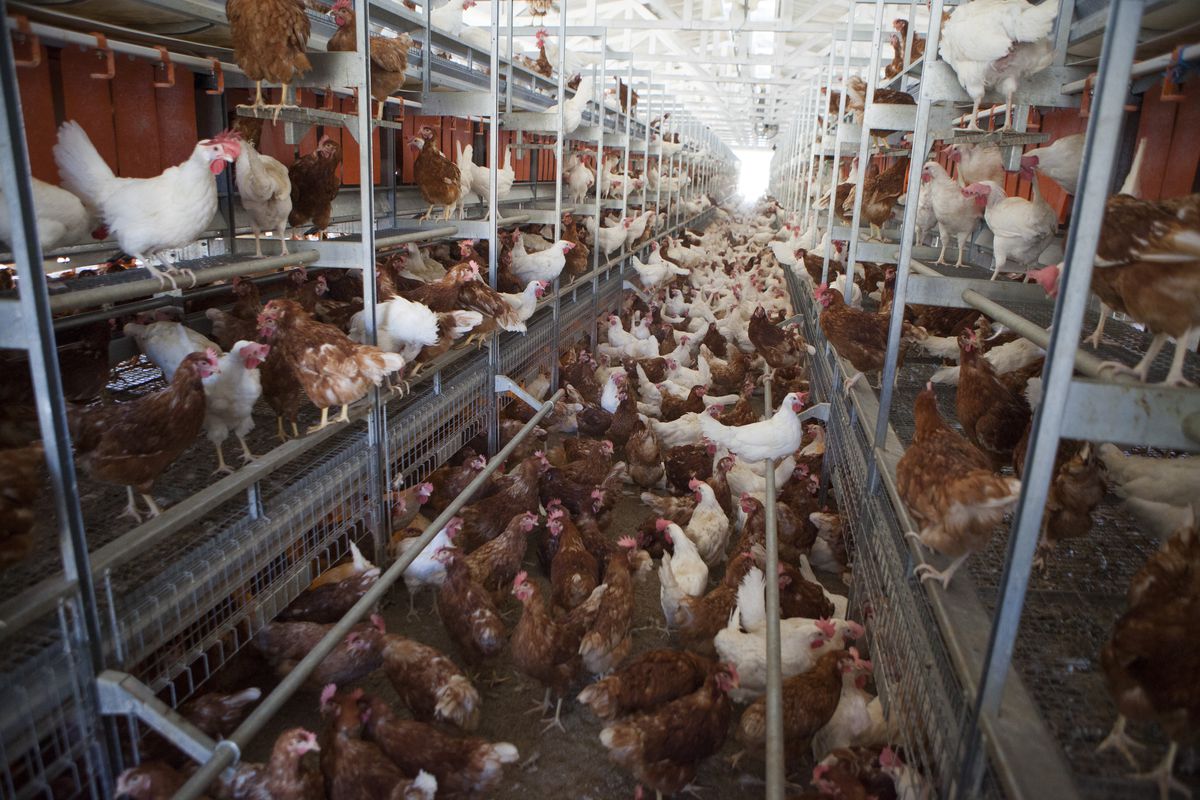
Feed. No required difference in feed for a caged hen or a cage-free hen – none noted in the UEP guidelines. What’s the difference in egg nutrition between a caged and cage-free egg if the hens eat the same food?
Activity level? In the first two cage-free systems, the hen can move around a 1 sq ft floor space and climb up and down their vertical space. The single-level system allows them to move around in 1.5 sq ft of space. The industry has moved one small step closer to enabling normal animal behavior in this context.
Nutrition. Theoretically, it’s the same nutritional value as the caged egg we studied in Part I. A 2010 study led by D. R. Jones (USDA, egg safety researcher) found no significant nutritional differences between caged and cage-free eggs. Perhaps the perception cage-free being healthier comes down to animal welfare and your conscience, not nutrients.
All natural.
The phrase sounds incredibly appealing. Natural sounds similar to organic, fresh, as it was in nature, having eaten only wild foods, inhabiting the outdoors with freedom to roam. Synonymous with pure, raw, unadulterated by humans, unprocessed. I’m sad to say, but this is NOT true at all. However, “natural” is now regulated by the USDA, which is great news! Here’s what it means:
“A product containing no artificial ingredient or added color and is only minimally processed. Minimal processing means that the product was processed in a manner that does not fundamentally alter the product. The label must include a statement explaining the meaning of the term natural (such as “no artificial ingredients; minimally processed”).”
“Natural” is now bridging the gap between processed foods and organic certified foods. You mean NO artificial flavors, colors, sweeteners and dang-close to being a whole food?? Absolutely. It’s an industry-consumer win-win. Here’s why. Producers don’t have to pay the hefty price tag to certify their farm or pasture “organic” and undergo or maintain extensive agricultural changes. Consumers get a healthier-than-mainstream product at an affordable price. Here’s bacon, for example:
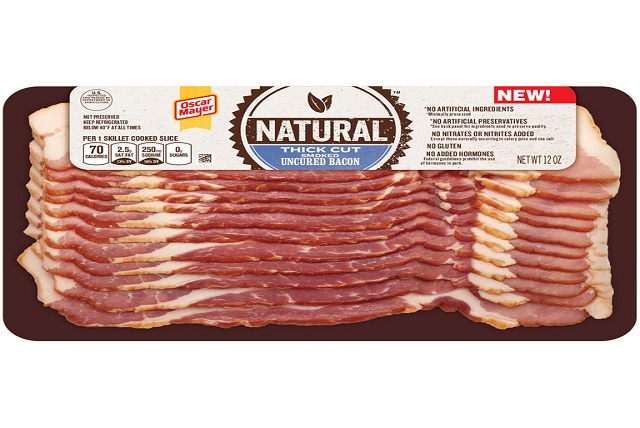
The “natural” label on this package of bacon requires that it be free of the artificials and disclose what the artificials are. Notice the word “uncured”, along with “no nitrates or nitrites added” & “no added hormones.” It’s not to the “organic” standard, especially regarding the animal conditions and feed. But the ingredients are a little cleaner. Check out these natural eggs:

Here’s where marketing trumps health concern. Although natural eggs may mean they won’t add any dyes or artificial flavors, these aren’t necessary. Marigold Extract added to their food yields a richer colored yolk. Laying hens who eat only grains by-products will likely produce eggs with an underwhelmingly neutral taste. No need to flavor enhance – this is what the market expects.
The label also displays, “grain fed”, “vegetarian fed”, and “eggs do not contain added hormones or antibiotics.” Keep in mind that chickens aren’t vegetarians. No grubs means these chickens are definitely NOT free-range. Hormone use in poultry has been banned by the FDA since 1960, says U of A Division of Agriculture. Antibiotics, you ask? The U.S. Poultry & Egg Association defines “antibiotic-free” eggs as chickens who have NOT received antibiotics while in their growth or laying stages. Apparently, vaccines are doing the job as antibiotic use is becoming more rare.
“Natural: This term simply means that nothing was added to the egg. All eggs meet this criteria.” – USDA
Free-range.
Conditions. “Producers must demonstrate to the Agency that the poultry has been allowed access to the outside.” – writes the USDA’s Food and Safety Inspection Service. The laying hens may not actually go outside, but access is key for this label. The other guidelines are rather ambiguous, allowing a cage-free chicken to become free-range ONLY with range access.
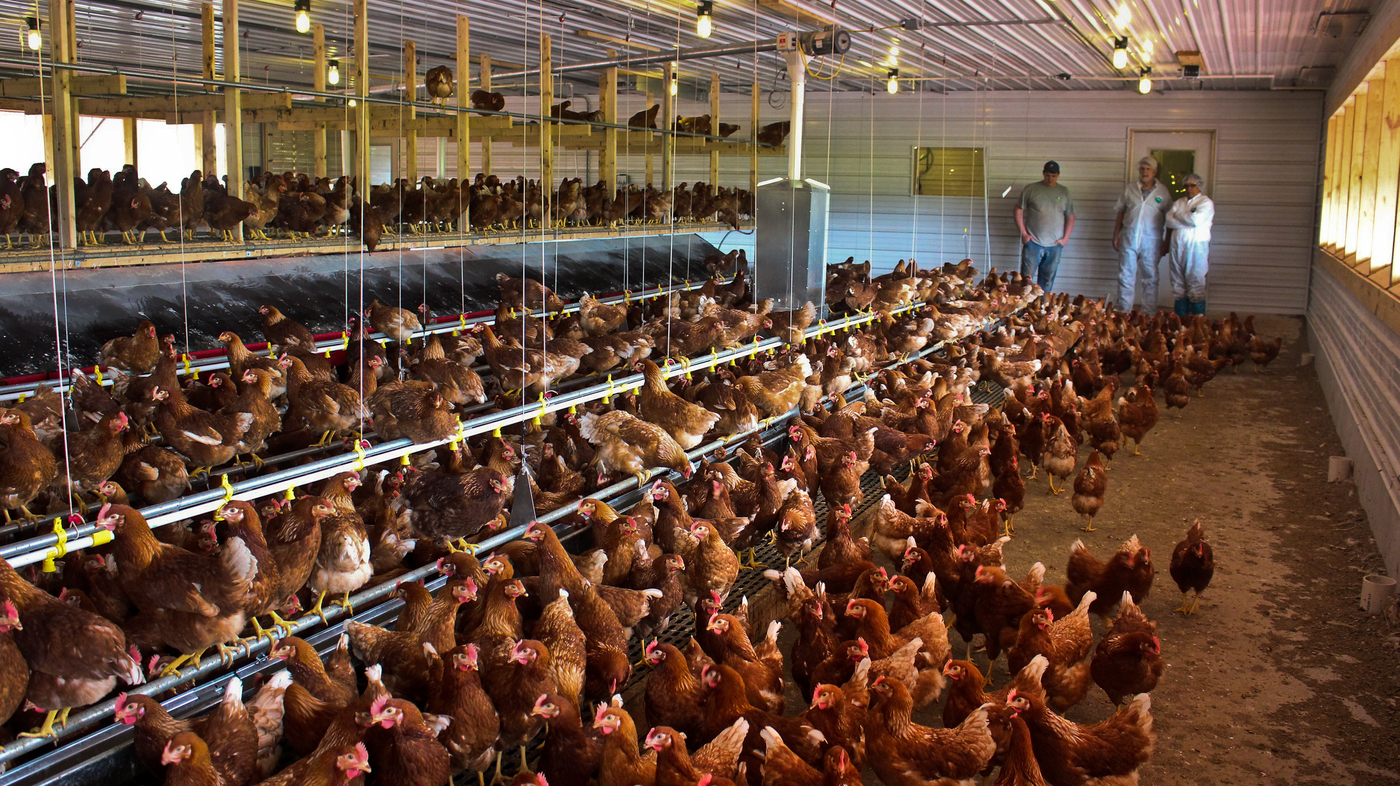
The next level up is a Certified Humane egg. Human Farm Animal Care (HFAC) is a global nonprofit that offers a seal of approval to all egg producers who follow their stricter free-range guidelines. Better outdoor access, healthier vegetation, dust-bathing, mitigation of parasites, and proper shelter.
Feed. They will likely consume the exact same feed as the caged and cage-free chickens, with an exception. If the chickens choose to access their range, they may eat available vegetation and grubs. But, without a Certified Humane seal, the range may not be healthy enough to support these highly nutritious offerings.
“In addition to the feed provided, these hens may also eat wild plants and insects.” – USDA
Activity level? Extremely variable. Some flocks may never go outside – chickens that are functionally cage-free but labeled as free-range. Other flocks may choose or be encouraged to get outside every sunny day during laying season. The average? Likely not very active.
Nutrition. This 2018 study showed small differences in mineral content between hen eggs in battery cages, enrichable cage systems, enriched colony housing, cage-free and free-range environments. This 2011 study found an increase in total fat content & omega-3 fats in the free-range eggs compared to cage-free eggs. No difference in cholesterol, vitamin E or vitamin A content though.
Organic.
Conditions. Must have adequate access to the outdoors year-round, a step above free-range’s “laying season” specific requirement. “Continuous indoor confinement” is not allowed. Temporary indoor confinement is ONLY allowed for health risk, laying stage or weather reasons. Pressure treated wood with arsenate is prohibited if accessible to the chickens. [USDA guidelines]
Feed. Must be 100% organic feed, including the pastures, supplements, and kitchen / garden scraps. The following are NOT allowed in the feed: synthetic preservatives, genetically modified organisms (GMO), animal by-products, antibiotics, and mineral oil to name a few. [USDA guidelines]
Activity level? With a higher standard of outdoor access, organic laying hens likely get outside and move more than their typical free-range counterparts. Perhaps the healthiest overall flock we’ve discussed thus far.
Nutrition. The obvious improvements include long-game nutritional benefits: no GMOs in the feed, no subpar animal leftovers fed to the chickens, and no antibiotic residues in the eggs (even though the FDA heavily regulates these anyway). This 2009 study didn’t show a significant difference in fat content between organic and conventional (caged) eggs.
Free-range, organic.
Conditions, feed, activity level and nutrition will be almost identical to the “organic” section eggs above. As we discovered, organic laying hens will likely be more active than free-range hens based on the strict standards set by the USDA. The greatest benefit to get cleared for “free-range” on top of “certified organic” is marketability to consumers. The combined title sounds healthier than either title by themselves, right?
Pastured.
“Due to the number of variables involved in pasture-raised agricultural systems, the USDA has not developed a labeling policy for pasture-raised products.” – USDA from What is Organic?
Conditions. If the USDA doesn’t regulate pastured laying hens, who the heck does?? That would be the HFAC as mentioned above. They created their own brand label called “certified humane” to create even better conditions than free-range guidelines were offering. Pasture-raised as they called it. Get this: 108 sq ft per chicken. The vegetation stays much healthier if the hens aren’t able to demolish only 9 square feet of grass and grubs.
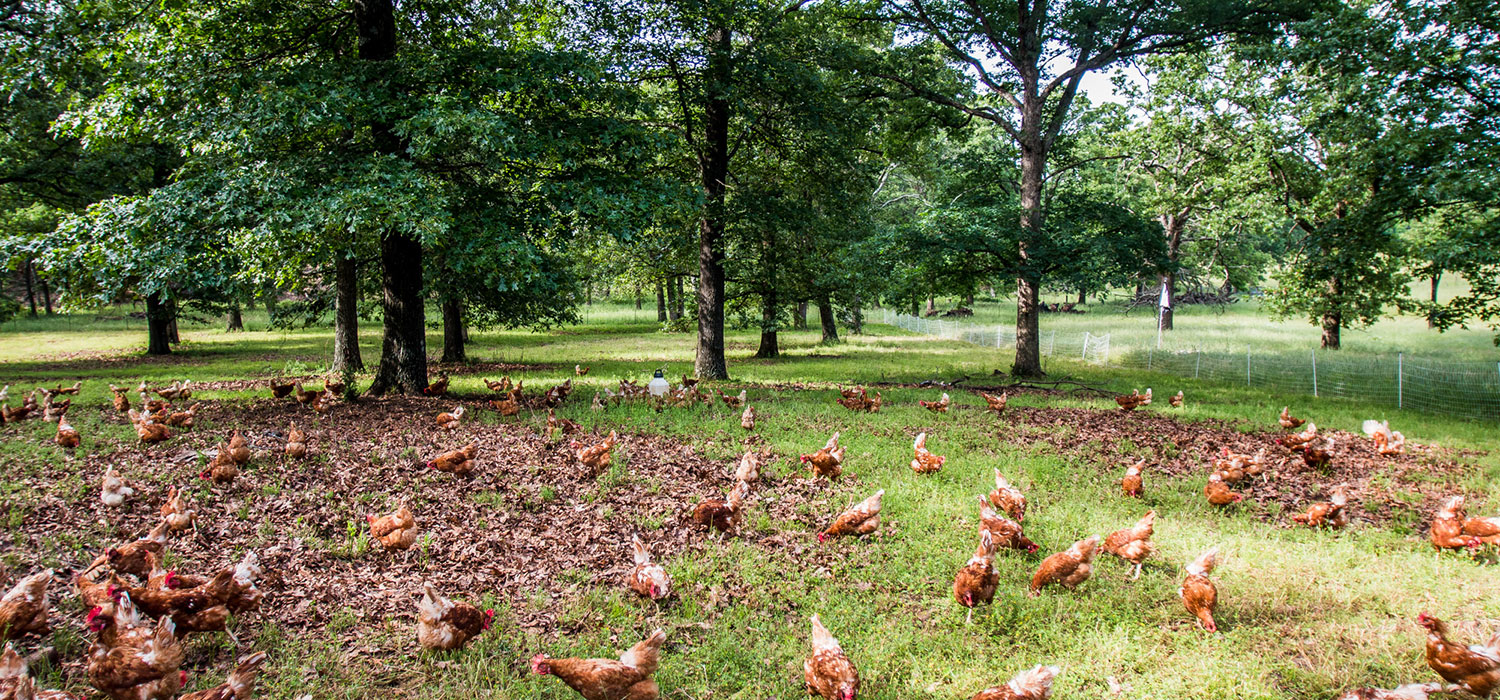
Feed. “Wholesome, nutritious feed.” A little vague. Here’s the nitty gritty. NO animal by-products, growth promoters, antibiotics (therapeutic only), or stale food. [HFAC feed guidelines]
Activity level? The hens are pastured 12 months out of the year, and kept in their housing at night. If necessary a hen can be kept indoors for over 24 hours, but must be given 14 straight days of pasture to follow. The most active bunch of birds of any label aforementioned. [HFAC standards]
Nutrition. A 2010 study found that, compared to caged-hen eggs, pasture-raised eggs had double the vitamin E, double the long-chain omega-3 fatty acids, and 2.5 times total omega-3s. Vitamin A concentration was 38% higher in the pastured flock, but total vitamin A was the same. A 2013 study placed chickens indoors, outdoors or a mix for 4 weeks straight. The outdoor flock eggs had over 3.5 times the vitamin D compared to the indoor flock.
So… which egg is best?
Let’s compare! Here’s the nutritional chart:

I went through and highlighted the items that are clearly winning above the rest. Otherwise I left each column blank. Check it out:

Takeaways.
From a nutritive standpoint, the data points to organic eggs being the most nutritious. Second place goes to pastured-raised eggs. And third place to free-range eggs. Although all three seem like fantastic choices when compared to caged eggs, and in some cases, when sized up against cage-free eggs as well. Disclaimer: Eggland’s Best had the most extensive data available, even above the USDA’s database and NutritionData.self.com. What the heck are they feeding their chickens, friends??
- Calories, protein, monounsatured fatty acids (MUFA), polyunsaturated fatty acids (PUFA), riboflavin (vitamin B2), vitamin B6, calcium, iron and copper didn’t vary much from caged to pastured.
- Saturated fat was 33% lower in the organic & pasture-raised eggs!
- Cholesterol was cut by a third in pasture-raised and some free-range eggs.
- Vitamin A was over 60% higher in pasture-raised and some free-range eggs.
- Eggland’s organic egg’s vitamin D was an astonishing 13.7 times greater than caged eggs!
- In terms of caged egg vitamin E, pasture-raised was over double, cage-free was over 7 times the amount, and organic was 10 fold!
- For vitamin B5, both free-range and pasture-raised eggs had over triple the B5 that caged contained. Organic were 5 fold.
- Consistent among the others, organic egg folate aka vitamin B9 AND zinc almost doubled the rest.
- Organic and some free-range eggs almost doubled the amount of vitamin B12 in caged eggs.
- The mineral selenium was greatest in the organic eggs.
From an animal welfare standpoint, pasture-raised definitely takes first place. As defined by the HFAC’s Certified Humane guidelines. Organic and free-range are tied for second, as their guidelines allow for a “pastured” approach, but don’t require mostly range-time.
Note: free-range and pastured are HUGE variables. Free-range can look like cage-free, or it can imitate pasture-raised, depending on the farmer. Pasture-raised will usually be outside on healthy vegetation, but will land somewhere between nutritious pellet feed and fresh food scraps from the owner’s kitchen or a local restaurant.
How do local eggs compare?
What about the local egg-lady or hen-guy that sells fresh chicken eggs just down the street from you? These gems have the potential to outweigh the nutritional value of every raising method we’ve previously discussed. Why? Only a handful of laying hens, wandering a large meadow, feasting on a delicious variety of kitchen scraps on a daily basis.
We get eggs from a former colleague who happens to be a registered dietitian with a fierce passion for raising laying hens the “right way.” It’s more like a fancy hotel with a nearby Chicken Spa than a coop. She intentionally buys whole foods just for the chickens to eat. Minnow pond. Wheatgrass. Greens growing around their run.
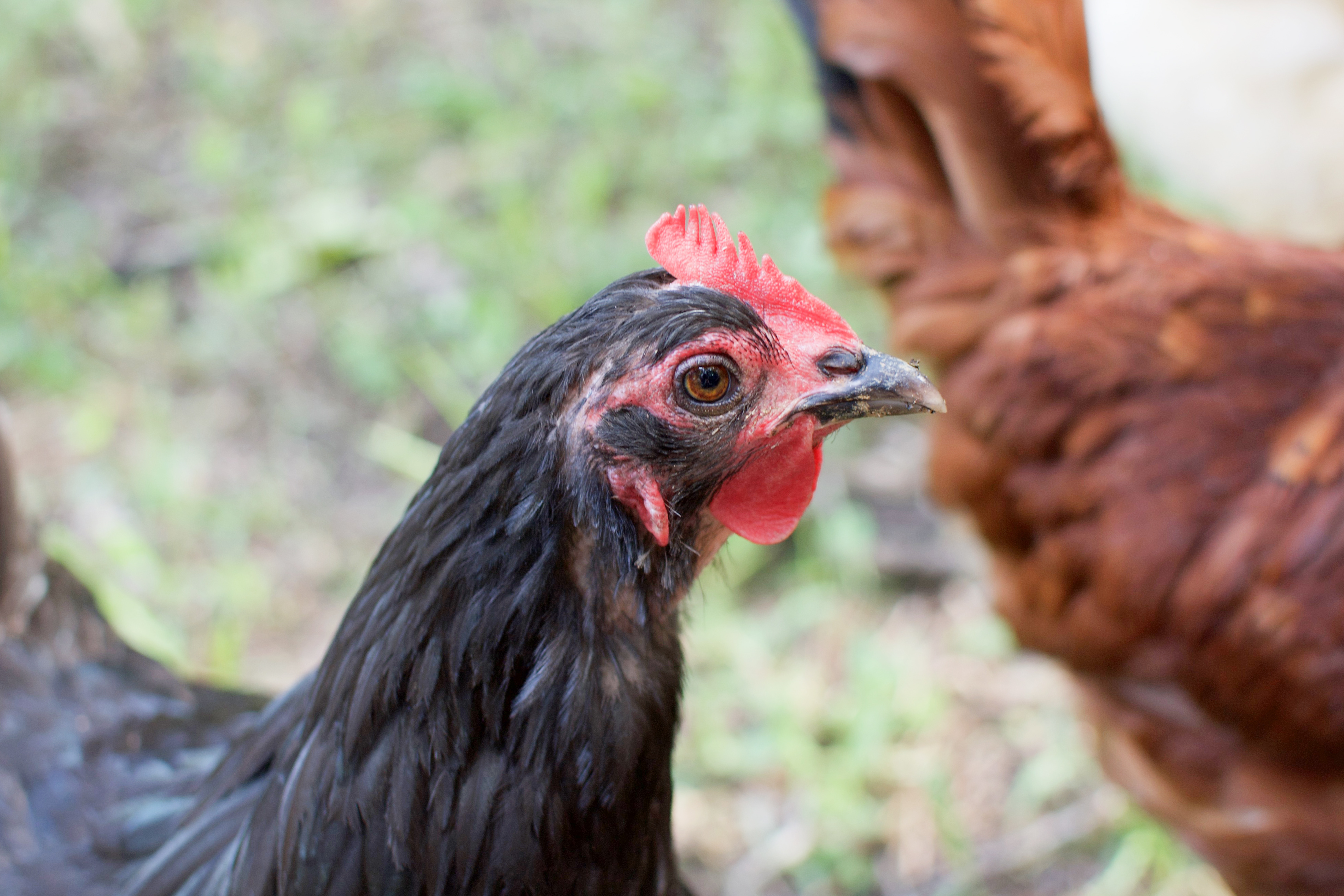
To be honest, I’ve never seen such massive yolks. Double the size of every other caged, cage-free and free-range eggs I’ve laid eyes on (pun?). We need to send these beauties to the closest university for nutritional testing. I’m confident they’d top the charts and I’d have to make some serious edits to this analysis. Where do you get your eggs? Is there a brand or farm or local you trust? We’d love to hear about it.
Learn something new from this article? Give us a shout out!
